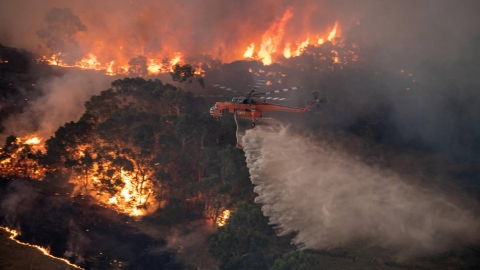These thousands of years old Australian canals, located in Budj Bim National Park in Victoria, Australia, include canals, levees and dams built from volcanic rock. According to UNESCO, this is one of the world's largest and oldest aquaculture systems, built by the Gunditjmara people more than 6,600 years ago, older than the pyramids of Egypt.

The aquatic system was known to archaeologists and added to the UNESCO World Heritage List in July last year. However, the devastating bushfires in Victoria state since December have revealed parts of the system that had never been seen before.
"When we returned to the area, we found a water channel hidden in the grass and other vegetation. It was about 25 meters long, which is quite a significant size," said Denis Rose, project director of the non-profit Gunditj Mirring Traditional Owners Aboriginal Corporation.

This aquaculture system, part of Budj Bim National Park, was built by indigenous people using volcanic rocks from a now-inactive volcano in the area, he said.
UNESCO said the Gunditjmara people used the system to navigate and navigate waterways to maximize aquaculture productivity. “The Budj Bim Cultural Landscape is an exceptional testament to the cultural traditions, knowledge, practices and craftsmanship of the Gunditjmara people.”

Rose said he was relieved that the fires had not caused as much damage to regional Victoria as other parts of Australia, and that this could be a good opportunity to explore more ancient aquaculture systems. “In the next few weeks, we hope to undertake a comprehensive cultural heritage survey to examine previously unexplored areas. This is important because it helps us understand the rich, sustainable way of life of ancient people, which is also an important part of our cultural life today.”






























